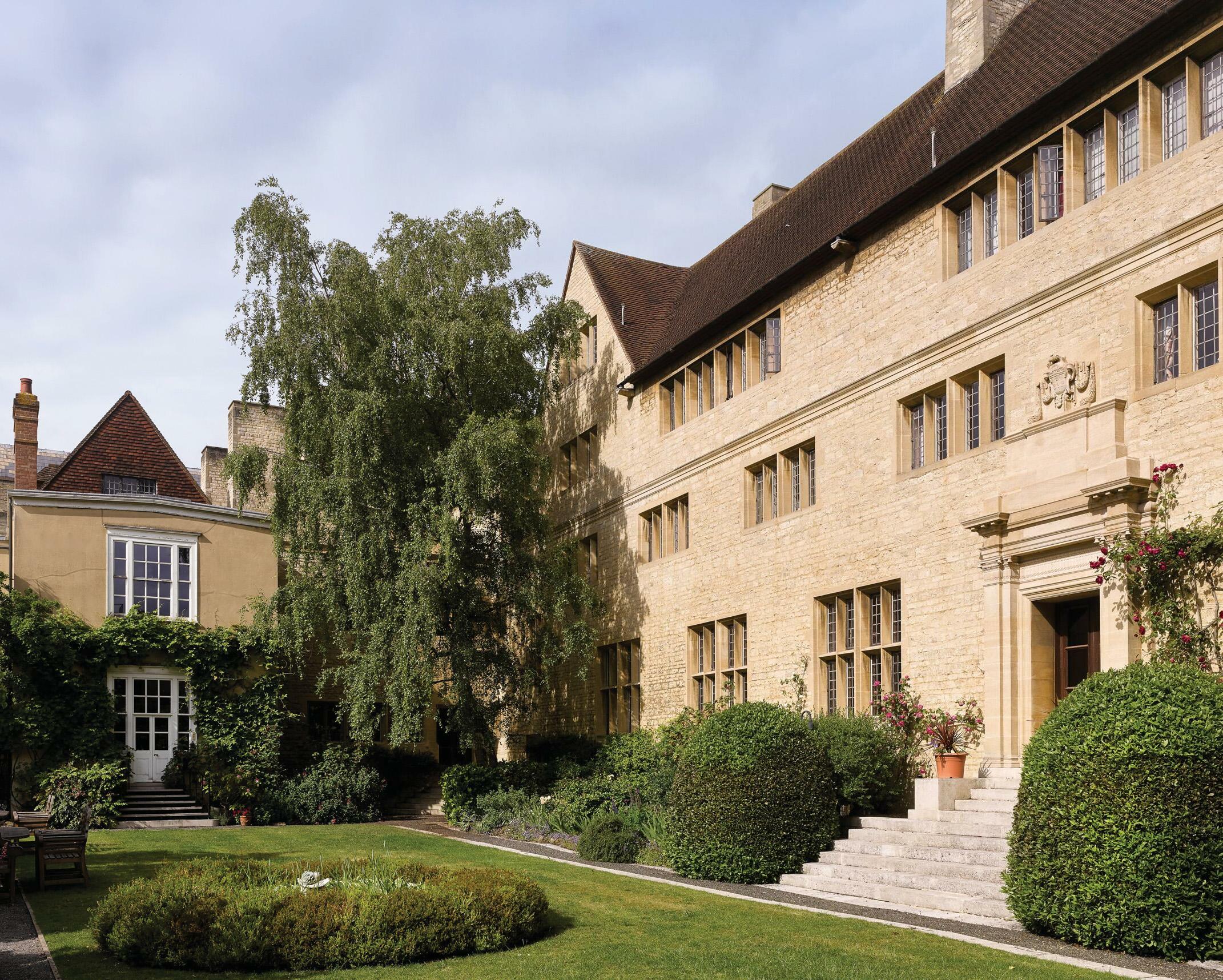
WHY not ask me?' enquired Sir Edwin Lutyens, when Father Martin D'Arcy needed an architect for Campion Hall in Oxford. It was 1934 and Lutyens was then in his mid sixties, knighted and the most famous architect in the country, whose oeuvre ran to some 550 buildings. 'But, Ned, D'Arcy replied, 'you have the reputation of being most appallingly expensive.' Lutyens assured him that his fees would be minimal and that he would keep an eye on the cost. He thus entered the esoteric, socially glamorous world of Jesuit Oxford, where architectural austerity would be combined with high art to form a haunt for, among others, Evelyn Waugh. Lutyens told Sir John Rothenstein that he considered Campion Hall his best building.
Although Oxford’s doors had been open to men of all faiths since 1871, it was only at the end of the century that the English Hierarchy thought it safe for Roman Catholics to attend. First on the scene had been the Jesuits, who opened Pope’s Hall—named after its master Thomas Pope, Society of Jesus (SJ)—in 1896. It was a small establishment, next to the Lamb and Flag pub, which, by the 1930s, seemed inadequate both to the numbers of Catholics at the University and the image that D’Arcy wanted to project. D’Arcy, who had been teaching at Oxford since 1927, was Roman Catholicism’s leading public intellectual in the UK, a magnet for an intellectual and social elite: among those who converted were Evelyn Waugh and Graham Greene. A vivid description of him comes from the artist Stanley Parker: his etiolated face looked as if it was ‘wasted to the bone by the rarest and most exquisite emotions, seared with the imprint of the deepest thought, consumed, almost, by the inner fire which blazed and smouldered in his eyes’.
This story is from the {{IssueName}} edition of {{MagazineName}}.
Start your 7-day Magzter GOLD free trial to access thousands of curated premium stories, and 9,000+ magazines and newspapers.
Already a subscriber ? Sign In
This story is from the {{IssueName}} edition of {{MagazineName}}.
Start your 7-day Magzter GOLD free trial to access thousands of curated premium stories, and 9,000+ magazines and newspapers.
Already a subscriber? Sign In

Tales as old as time
By appointing writers-in-residence to landscape locations, the National Trust is hoping to spark in us a new engagement with our ancient surroundings, finds Richard Smyth

Do the active farmer test
Farming is a profession, not a lifestyle choice’ and, therefore, the Budget is unfair

Night Thoughts by Howard Hodgkin
Charlotte Mullins comments on Moght Thoughts

SOS: save our wild salmon
Jane Wheatley examines the dire situation facing the king of fish

Into the deep
Beneath the crystal-clear, alien world of water lie the great piscean survivors of the Ice Age. The Lake District is a fish-spotter's paradise, reports John Lewis-Stempel

It's alive!
Living, burping and bubbling fermented masses of flour, yeast and water that spawn countless loaves—Emma Hughes charts the rise and rise) of sourdough starters

There's orange gold in them thar fields
A kitchen staple that is easily taken for granted, the carrot is actually an incredibly tricky customer to cultivate that could reduce a grown man to tears, says Sarah Todd

True blues
I HAVE been planting English bluebells. They grow in their millions in the beechwoods that surround us—but not in our own garden. They are, however, a protected species. The law is clear and uncompromising: ‘It is illegal to dig up bluebells or their bulbs from the wild, or to trade or sell wild bluebell bulbs and seeds.’ I have, therefore, had to buy them from a respectable bulb-merchant.

Oh so hip
Stay the hand that itches to deadhead spent roses and you can enjoy their glittering fruits instead, writes John Hoyland

A best kept secret
Oft-forgotten Rutland, England's smallest county, is a 'Notswold' haven deserving of more attention, finds Nicola Venning